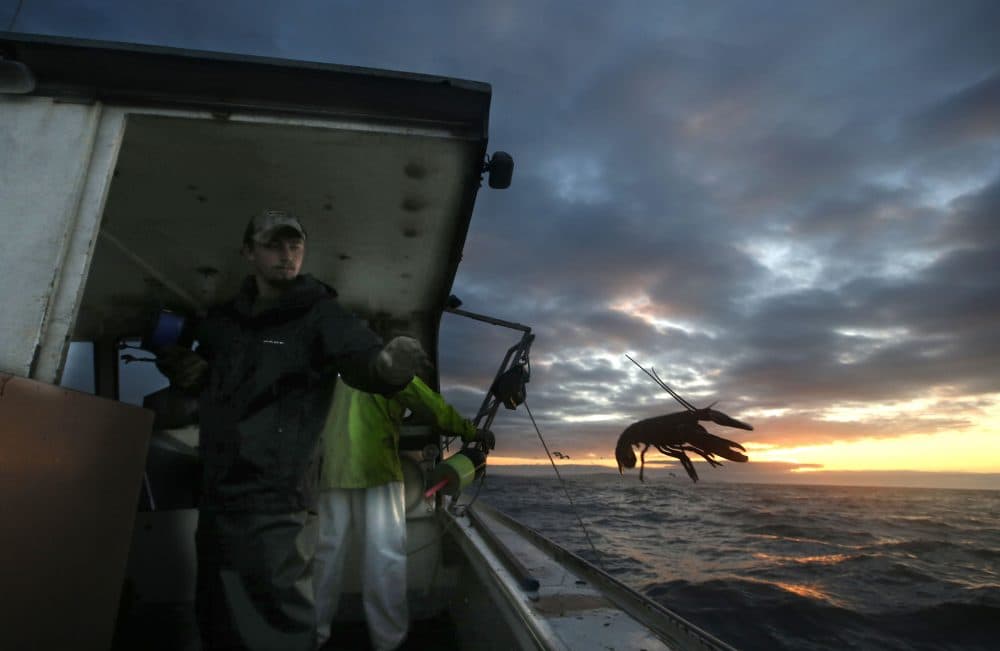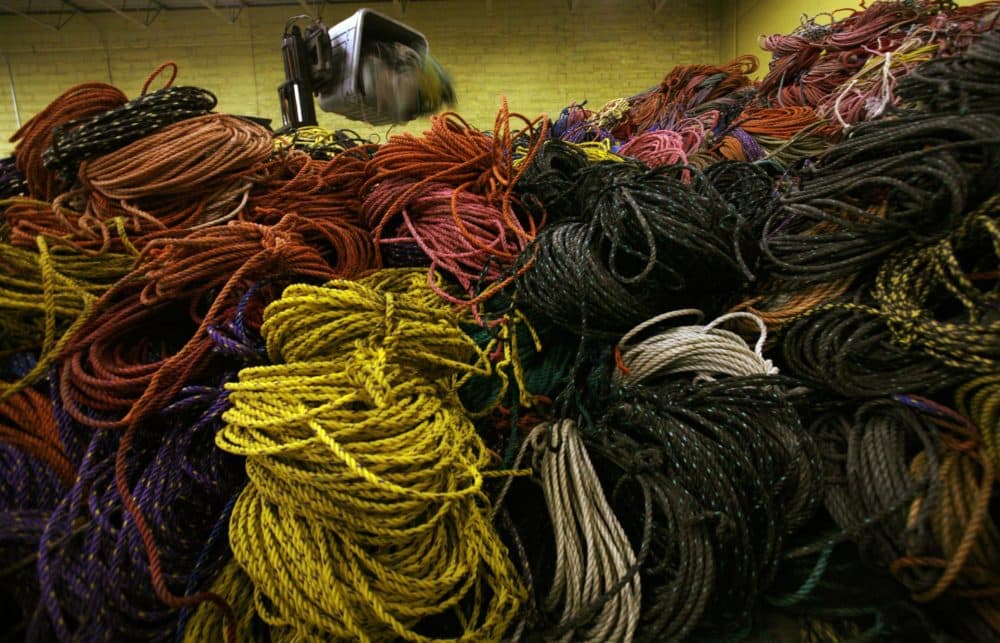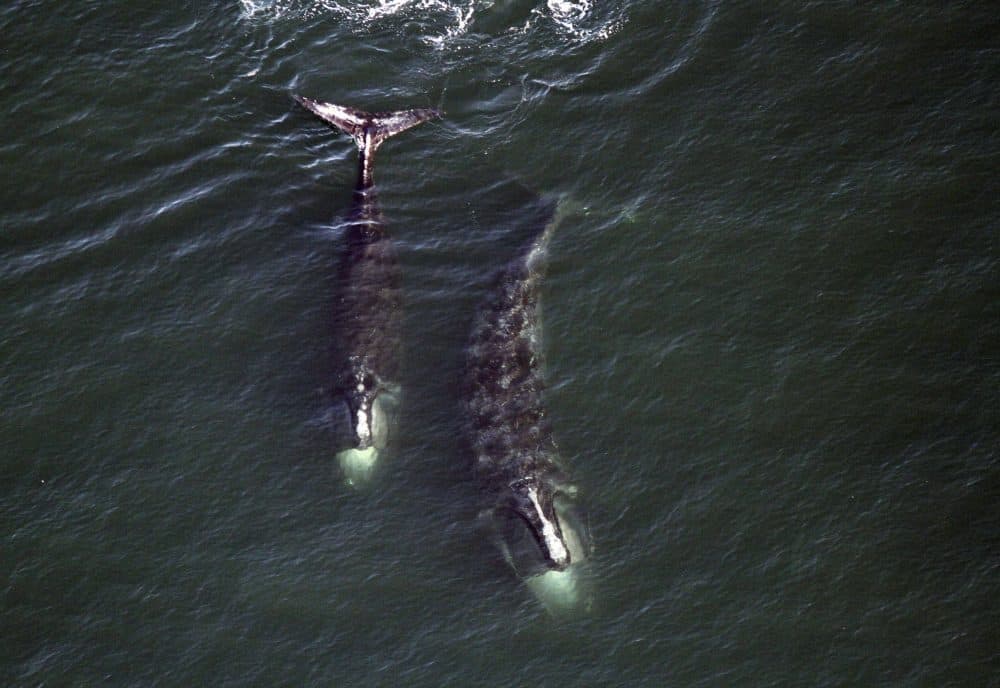Advertisement
Maine Lobstermen Face 50% Trap-Rope Reduction To Protect Right Whales

Within a few years, Maine’s lobster harvesters will have to remove half of their trap-rope from the water. That is just one of the recommendations agreed on Friday by a broad group of stakeholders tasked with choosing measures to protect the endangered North Atlantic right whale from entanglement with fishing gear.
Representatives from 14 Atlantic coast states participated in the four-day consensus-building project, including fishermen scientists, state regulators and conservation groups. The stakes were highest for Maine’s lobster industry, which landed $484 million worth of the crustaceans last year – the most valuable single-species fishery in the nation.
The Cape Cod Times reports that Massachusetts and New Hampshire agreed to a 30% cut in the number of vertical lines, and to use ropes that break at a reduced weight.
“The regulations proposed here today are a big ask,” says Patrick Keliher, the commissioner of Maine’s Department of Marine Resources.
Keliher says if federal fisheries managers adopt the recommendations, Maine’s lobster industry will take a severe economic hit.
“The northeast corner of the country and much of our coastline is incredibly poor,” Keliher says. “There are not a lot of other options, so we have to recognize that’s different from the rest of New England.”
One lobsterman from Steuben, Michael Sargent, agreed there would be rough waters ahead. But he also helped push the group to consensus by saying he would find a way through.
“When I reduce 50% of my vertical lines, in my boat alone, I am going to remove 10.78 miles of vertical line,” Sargent says. “So that has implications on my fishing ability in places. [It’s] scary for me, but I know I can go back to my fishery and explain to my fishermen this is something that we can do.”
The recommendations include an exemption for young fishermen, nearshore, and shallow waters.
Other measures that will now be considered in a two-year federal rule-making process include using weaker rope or weak links that whales can easily break through, and more rigorous gear-marking requirements to help identify which gear whales are most often contending with. Overall, all the states agreed to reduce risk of significant injury or mortality for whales by 60%, with each agreeing to reach that goal through a combination of strategies.

Maine officials and lobstermen had pressed for more time before deciding on the recommendations, saying the federal government provided inadequate and poorly vetted data and models for determining the most effective methods of reducing risk for the whales.
But at Friday’s meeting, Patrice McCarron, executive director of the Maine Lobstermen’s Association, said National Oceanic and Atmospheric Administration officials held firm to their goals and timeline.
“The agency’s been extraordinarily stern about the goal posts,” McCarron says. “And the fact that it’s happening with or without us. And we took that to heart. And it’s black and white, it’s rope that’s not going to be there any more, and I’d like you to think about that incontrovertible benefit to the whales.”
There are fewer than 420 North Atlantic right whales left in the world, and federal scientists say that entanglements are the leading cause of injury and death. The stakes were accentuated this week when news filtered in that two right whales had been spotted in waters off Cape Cod waters, entangled in fishing gear.

Many at the meeting said Friday’s decisions would be the biggest step yet taken to protect the species.
“Really powerful, and could help the situation tremendously,” says Amy Knowlton, a whale researcher at the New England Aquarium.
“I think it’s a huge move forward for the U.S. industry to be taking some of the measures they are going to be putting in place, to get 50% gear reduction, especially up in Maine, where rope density is so high,” Knowlton says.
The recommendations were endorsed by most of the conservation organizations in the group, even as they continued to advocate more aggressive action – such as seasonal fishery closures when whales are likely to be present, or wholesale removal of rope from the water.
Sharon Young, the marine species field director for the Humane Society of the United States, was the lone dissenter to the consensus vote endorsing the recommendations.
“The ultimate solution is for whales not to be encountering things that will kill them,” Young says. “The photograph we saw of the animal they tried to rescue in Cape Cod Bay yesterday, it had line through its mouth, over its head, down the body and trailing to a trap. This plan would not have prevented that from happening, and what we need to do is stop that.”
The environmental groups warned that they would press forward with lawsuits under the Endangered Species Act, which they hope will force the federal government to quickly enact more protective measures for the right whales.
Back in Maine, meanwhile, DMR Commissioner Keliher says his next task will be to deliver the news to the lobster industry, and begin work on ways to meet the new regulatory reality.
This story was originally published by Maine Public Radio.